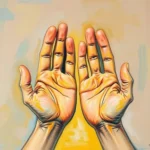
Have you ever woken up from a dream and felt a lingering sense of confusion or curiosity? Perhaps the dream left you with a profound feeling, one that lingers in the corners of your mind like a sweet melody. Dreams are not just random thoughts; they are windows into our subconscious, revealing desires, fears, and emotions that we might not fully acknowledge in our waking lives. Understanding the symbols and narratives within our dreams can empower us, guiding us toward satisfaction in our daily experiences.
In this exploration, we’ll delve into the rich world of dream symbols, discuss relatable experiences through various dream scenarios, and ultimately, uncover how we can utilize these insights for our personal growth. So, let’s embark on this journey of dream symbolism and self-discovery together.
The Language of the Dream: Unpacking Symbols
Dreams often communicate through symbols, and learning to interpret these can unlock a treasure trove of self-awareness. Think of dreams as a language, one that speaks to us in vibrant images and profound motifs. Cultural perspectives on dream symbols can enrich our understanding. For instance, in many Indigenous cultures, dreams are seen as spiritual messages, while in Western psychology, they are often viewed as reflections of our inner psyche.
When interpreting symbols, consider the following key concepts:
-
Animals: Animals in dreams can embody traits we associate with them. A lion might signify courage or leadership, while a mouse could represent feelings of vulnerability or being overlooked. Reflect on the animal’s nature and how it relates to your current life situation.
-
Water: Water is a potent symbol representing emotions and the subconscious. Calm waters may indicate peace, while turbulent waters might suggest emotional unrest. Dive deep into your emotions to decipher the message behind the waves.
-
Flight: Dreams of flying often signify a desire for freedom or escape. They can also indicate personal growth or a new perspective on life. How does the sensation of flying relate to your current aspirations or challenges?
-
Chase: Being chased in a dream may highlight feelings of anxiety or avoidance in your waking life. What are you running from, and how can you confront or address that fear?
-
Falling: Falling can evoke a sense of loss of control or fear of failure. It often invites the dreamer to reassess their situation and find stability in their waking life.
Understanding these symbols is the first step in making sense of what your dreams are trying to convey. They can provide valuable insights into your inner thoughts and feelings, possibly leading you toward a more fulfilling life.
Dreamscapes of Desire: Scenarios for Reflection
Let’s explore some common dream scenarios that many people experience. By examining these narratives, we can glean insights about our own lives and the satisfaction we seek.
1. The Dream Job Offer
Imagine dreaming about receiving an offer for your dream job. You feel a rush of excitement and anticipation. However, when you wake up, you realize it was just a dream. This scenario can symbolize a longing for career fulfillment. It might suggest that you’re at a crossroads in your professional life, yearning for change or perhaps feeling undervalued in your current role. Reflect on what steps you can take to align your career with your passions.
2. The Perfect Relationship
In another scenario, you might dream of being in a perfect relationship, where everything flows effortlessly, filled with laughter and joy. This dream can reveal your desire for emotional connection and intimacy. However, it might also indicate a need to address any feelings of loneliness or dissatisfaction in your current relationships. Consider what you can do to foster deeper connections with those around you.
3. The Lost Item
Picture yourself frantically searching for a lost item, like a treasured keepsake or an important document. This dream scenario often symbolizes feelings of insecurity or a fear of losing something valuable in your life. It may indicate that you’re feeling ungrounded or that something fundamental is missing. Use this awareness to identify what you truly value and what steps you can take to reclaim that sense of security.
4. The Public Performance
In this dream, you find yourself on stage, performing in front of an audience. Your heart races, and you feel exposed. This scenario can reflect feelings of vulnerability and a fear of judgment. It might indicate that you’re grappling with self-image or the pressure to succeed. Acknowledge these feelings and explore how you can cultivate self-acceptance in your waking life.
5. The Journey to an Unknown Place
Finally, imagine a dream where you embark on a journey to an unfamiliar place. Initially filled with excitement, you soon feel lost and uncertain. This dream symbolizes a search for identity or purpose. It can reveal a desire for exploration, whether it’s physically, emotionally, or spiritually. Embrace this urge to discover more about yourself and consider what steps you can take to embark on new adventures in your life.
Embracing Transformation: Your Path to Growth
Having explored the rich tapestry of dream symbols and relatable scenarios, it’s time to focus on how you can transform these insights into personal growth. Dreams are not just passive experiences; they can be catalysts for change, urging us to take action in our waking lives.
-
Journaling: Keep a dream journal to capture your dreams as soon as you wake up. Write down the symbols, feelings, and scenarios that stand out. Over time, patterns may emerge that can provide clarity on your desires and challenges.
-
Mindfulness: Cultivate mindfulness to enhance your awareness of both your dreams and waking life. By being present, you can better recognize the emotions and desires that surface in your day-to-day experiences. Mindfulness can help bridge the gap between your subconscious and conscious mind.
-
Therapy: If dreams consistently evoke strong emotions or trigger memories, consider speaking with a therapist. They can help you unpack these feelings and provide strategies for addressing underlying issues. Therapy can be a powerful tool for personal development and emotional healing.
-
Goal Setting: Use the insights gained from your dreams to set actionable goals. Whether it’s pursuing a new career, enhancing relationships, or embracing your creativity, let your dreams guide you toward what truly satisfies you. Write down your goals and create a plan to achieve them, allowing your dreams to fuel your motivation.
-
Creative Expression: Tap into your dreams by engaging in creative activities that resonate with you. Whether it’s painting, writing, or music, let your subconscious flow into your art. This can be a healing process, allowing you to explore and express feelings that arise from your dreams.
Ultimately, dreams serve as a mirror, reflecting our innermost desires and fears. By engaging with them, we can gain profound insights into our lives, leading us toward greater satisfaction and fulfillment. The journey of self-discovery through dreams is one of the most rewarding paths we can embark on.
As you navigate the winding roads of your dreams, remember: the answers you seek are often hidden within you. Embrace the messages from your subconscious, and let them guide you toward a life that resonates with authenticity and joy. Your dreams are waiting—are you ready to listen?







